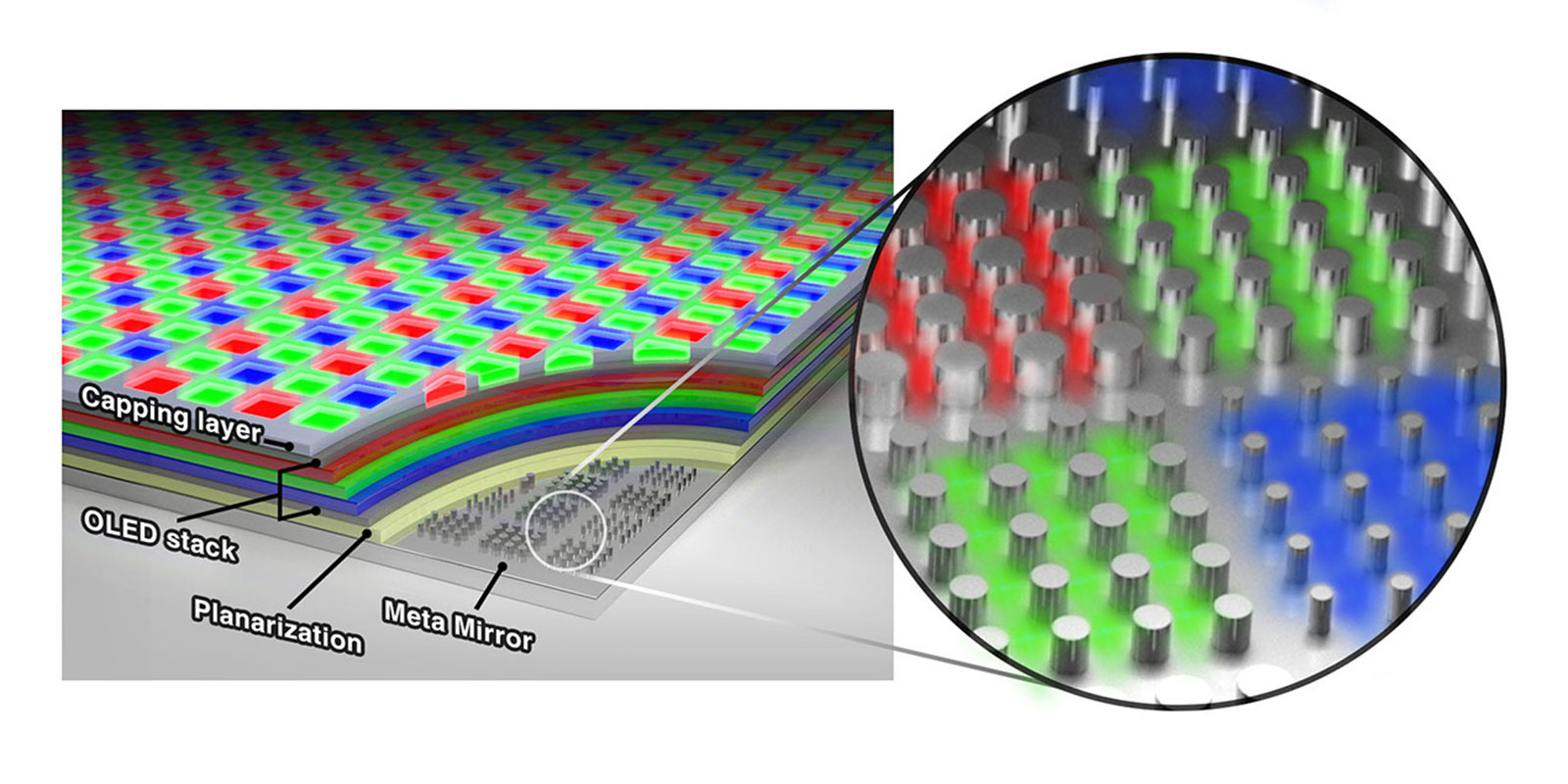Ask VR fans about their gripes and they’ll likely mention the “screen door” effect, or the gaps between pixels that you notice when looking at a display so close to your eyes. That annoyance might disappear entirely if Samsung and Stanford University have their way. They’ve developed (via IEEE Spectrum) OLED technology that supports resolutions up to 10,000 pixels per inch — well above what you see in virtually any existing display, let alone what you’d find in a modern VR headset like the Oculus Quest 2.
The newOLED tech uses films to emit white light between reflective layers, one silver and another made of reflective metal with nano-sized corrugations. This “optical metasurface” changes the reflective properties and allows specific colors to resonate through pixels. The design allows for much higher pixel densities than you see in the RGB OLEDs on phones, but doesn’t hurt brightness to the degree you see with white OLEDs in some TVs.
This would be ideal for VR and AR, creating a virtually ‘flawless’ image where you can’t see the screen door effect or even individual pixels. This might take years to arrive when it would require much more computing power, but OLED tech would no longer be an obstacle.
It’s also more practical than you might think. Samsung is already working on a “full-size” display using the 10,000PPI tech, and the design of the corrugations makes large-scale manufacturing viable. It may just be a question of when and where you see this OLED rather than “if.”
Source: Samsung, Stanford make a 10,000PPI display that could lead to ‘flawless’ VR | Engadget

Robin Edgar
Organisational Structures | Technology and Science | Military, IT and Lifestyle consultancy | Social, Broadcast & Cross Media | Flying aircraft

